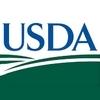Explore all the information on
Probiotics and prebiotics in poultry nutrition
Under normal circumstances, there is a delicate balance of beneficial and pathogenic bacteria in the gastrointestinal tract (GIT). This is influenced by symbiotic and competitive interactions and relationships. The microbial communities will not only protect the GIT but also enhance productivity in the host. The use of probiotics and prebiotics are two approaches that have been examined and can potentially reduce enteric diseases in poultry and also enhance their productivity. These substances have been proposed to assist in the prevention of carcass contamination and improve the immune response in the chicken. Probiotics have been defined as 'a live microbial feed supplement which beneficially affects the host animal by improving its intestinal balance' (Fuller, 1989). The probiotic mode of action is by 'competitive exclusion', meaning there is competition for attachment sites in the GIT.
Kuo-Wei Ssu, Sales Manager for ICC in China, gave Engormix.com an interview in Chinese Mandarim about Hilyses, the company's bionic prebiotic....
Comments : 0
Recommendations: 5
Introduction Distillers dried grains with solubles (DDGS) are by-products obtained during production of biofuels as renewable energy sources. During starch fermentation from cereal grains, ethanol and CO2 are produced; meanwhile, the remaining nutrients are concentrated in the DDGS fraction (Singh et al., 2005). Corn is the main cereal used in ethanol production in the United States; however, other grains such as wheat, barley, and sorghum are utilized in different regions of...
Comments : 0
Recommendations: 0
Debby Yen, Business Manager for the Animal Nutrition products at SYNBIO TECH Inc, speaks about the researches this company has been developed through a significant production of world-class probiotics by applying lactic acid bacteria i including functional health probiotics, bacterial strains for fermented milk products silages, application of antibiotic-free farming in livestock and aquaculture, during Eurotier 2018...
Comments : 0
Recommendations: 3
Introduction Widespread use of antibiotics as growth promoters in animal feed is suspected to be a major driving force for the development of antibiotic-resistant pathogens, which have become a critical public health concern worldwide. Enhancing host immunity and disease resistance by specifically boosting the synthesis of endogenous host defense peptides (HDPs) may represent a promising antibiotic alternativ-strategy. HDPs have been found in nearly all forms of life and play an...
Comments : 0
Recommendations: 0
INTRODUCTION Raising country-type chicken and hens is a tradition amid great part of Brazilians that live on either the countryside or urban area. The production of these animals is designated to the familiar consumption, performing an important part on the subsistence and acting as a source of emergency income to the rural producer. An increase in the production contributed for the competition among the producer companies, which every day search for differentiated...
Comments : 0
Recommendations: 0
Charles Hofacre (Southern Poultry Research and University of Georgia) discussed probiotics and prebiotics that can help in fighting Salmonella colonization in broilers, during IPPE 2018 in Atlanta, USA....
Comments : 1
Recommendations: 6


DL-methionine can replace methionine-hydroxy anlalog products in a ratio of 65:100 in laying hen fee
Suggested link
Necrotic enteritis (NE) prevalently occurs in broilers aged from two to six weeks that mainly caused by Clostridium perfringens C. perfringens can rapidly proliferate and produce toxins in intestine that contribute to losses in productivity, raising mortality, and contamination products. A variety of approaches were explored to prevent the incidence of NE in poultry. Among these, probiotics shows promise as an alternative to antibiotics in inhibiting growth of...
Comments : 7
Recommendations: 3
Introduction Foodborne pathogens are widely diverse in nature and continue to be the major cause of global public health problems in both developed and developing countries. Among these pathogens is Salmonella, responsible for costs with medical care, loss of productivity and expenses with control by the food industry and, mainly, problems for the poultry industry (MAJOWICZ et al., 2010). The Enteric serotypes usually are the disease causative, such as aviary paratyphoid,...
Comments : 0
Recommendations: 1
Introduction Host defense peptides (HDPs), also known as antimicrobial peptides, are present in virtually all species of life and constitute a critical component of the innate immunity [1,2,3,4,5]. Defensins and cathelicidins represent two major families of HDPs in vertebrates [6,7,8,9,10,11]. While defensins are categorized by the presence of six conserved cysteine residues in the C-terminal mature sequence [6,7,8,11], all cathelicidins consist of a conserved cathelin domain in...
Comments : 0
Recommendations: 1
...
Comments : 0
Recommendations: 0
Charles Hofacre (Southern Poultry Research and University of Georgia) talked about his research on the protective effects of Direct-Fed Microbials in combination with a live vaccine against Salmonella Heidelberg in broilers, during IPPE 2018 in Atlanta, USA....
Comments : 1
Recommendations: 10
The company's R&D Coordinator explains the benefits of the yeast cell wall used to control pathogens contamination....
Comments : 0
Recommendations: 1
Melina Bonato, ICC's R&D Coordinator, explains all the benefits of Hylises. ...
Comments : 0
Recommendations: 2
Although nucleotides are not considered as essential nutrients, they play an important role in several metabolic processes, particularly in some body tissues and phases of animal life. Free nucleotides and nucleosides can be immediately absorbed by the enterocytes in the intestine and are especially important in tissues of rapid cell proliferation and limited capacity for synthesis through a de novo pathway (major route of nucleotides' production), as in in intestinal epithelial cells, blood...
Comments : 0
Recommendations: 0
Conclusions The assay performed was performed using Chromobacterium violaceum CV026 strain, capable of producing violacein in response to the presence of short chain N-aclyhomoserine lactones. Ecobiol®, prevented the production of violacein demonstrating the quorum quenching activity on C. violaceum CV026, using either C6 HSL (homoserine lactone) as a substrate. Introduction "Quorum sensing" (QS) is a...
Comments : 0
Recommendations: 5
INTRODUCTION Feed additives are substances that have the potential to enhance production performance without significantly altering the composition of feed. Broiler chicken requires high dietary energy and protein with balanced amino acid profile in the compound feed (Boling and Firman, 1998). Feed costs approximately about 70% of total production expenditure and nutrient lost in the feces either undigested or unabsorbed due to intestinal microbial population by parasitic action...
Comments : 0
Recommendations: 1
Poultry probiotics market has witnessed phenomenal gains over the recent years, with the growing pressure regarding reducing the use of antibiotics in the food chain. With the surging demand for meat and meat products, there has been a subsequently high demand for natural growth promoters (NGPs) for livestock over the antibiotics. Basically, poultry probiotics are live microorganisms that exhibit several beneficial effects on animal health. These probiotics are usually incorporated in animal...
Comments : 0
Recommendations: 0
In previous articles we overviewed different approaches for control of avian influenza in poultry including culling of infected birds , vaccination and the ...
Comments : 4
Recommendations: 1
Introduction Given the fact that the poultry industry has been a main contributor to the U.S. food supply over the past two decades, with an increase from $44.4 billion in value of production in 2013 to $48.3 billion in 2014, the necessity of capitalizing on the production of poultry is evident (1, 2). With the increasing trend to systematically remove sub-therapeutic levels of antibiotics from poultry feed due to public demand, poultry producers have been facing new challenges...
Comments : 14
Recommendations: 23
Antibiotics are commonly used in food animals to promote growth and prevent disease, as well as to treat sick animals. This has led to the development of antibiotic resistant pathogens and subsequently different countries have banned the use of antibiotics as growth promotion (AGPs). To eliminate the use of AGPs and to maintain animal productivity, some farmers have been using live microorganisms in the feed as feed supplements which beneficially affects the host animal by improving its...
Comments : 13
Recommendations: 2



.jpg&w=3840&q=75)




























